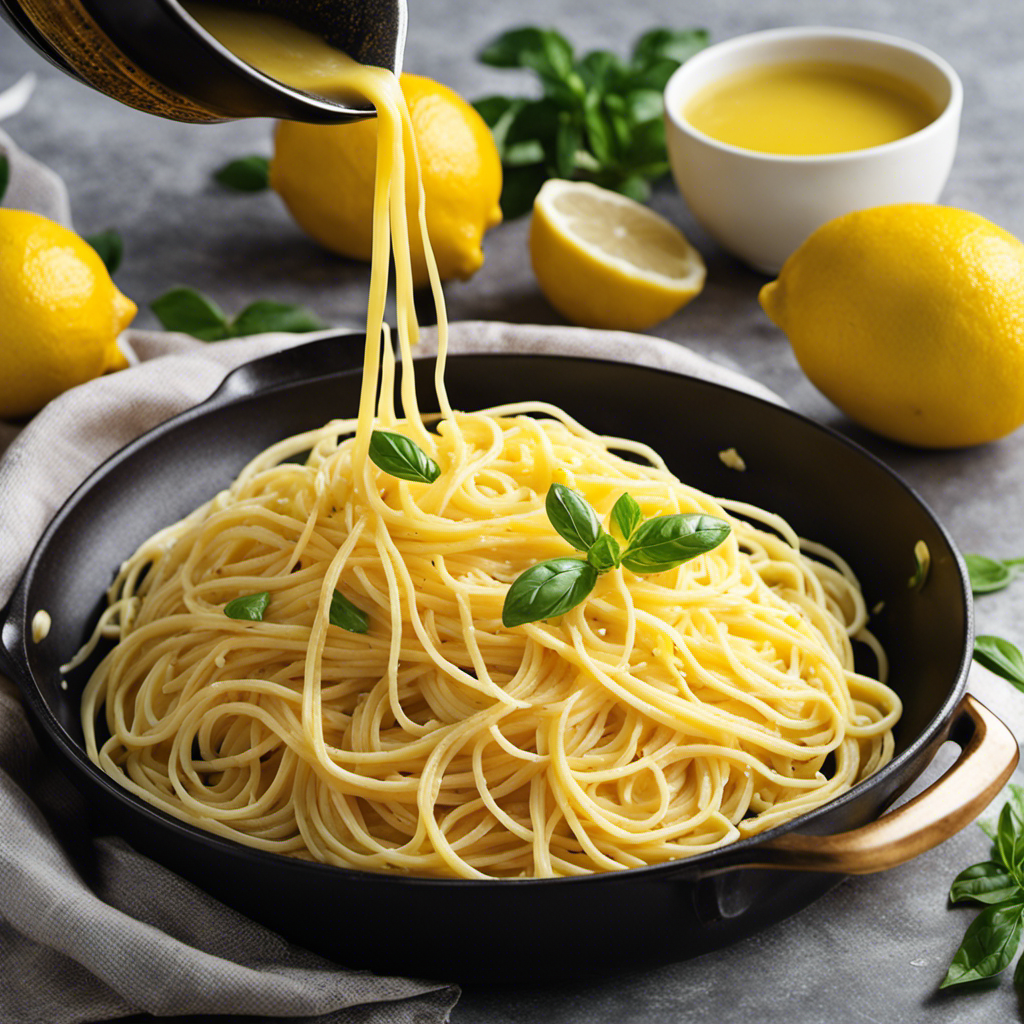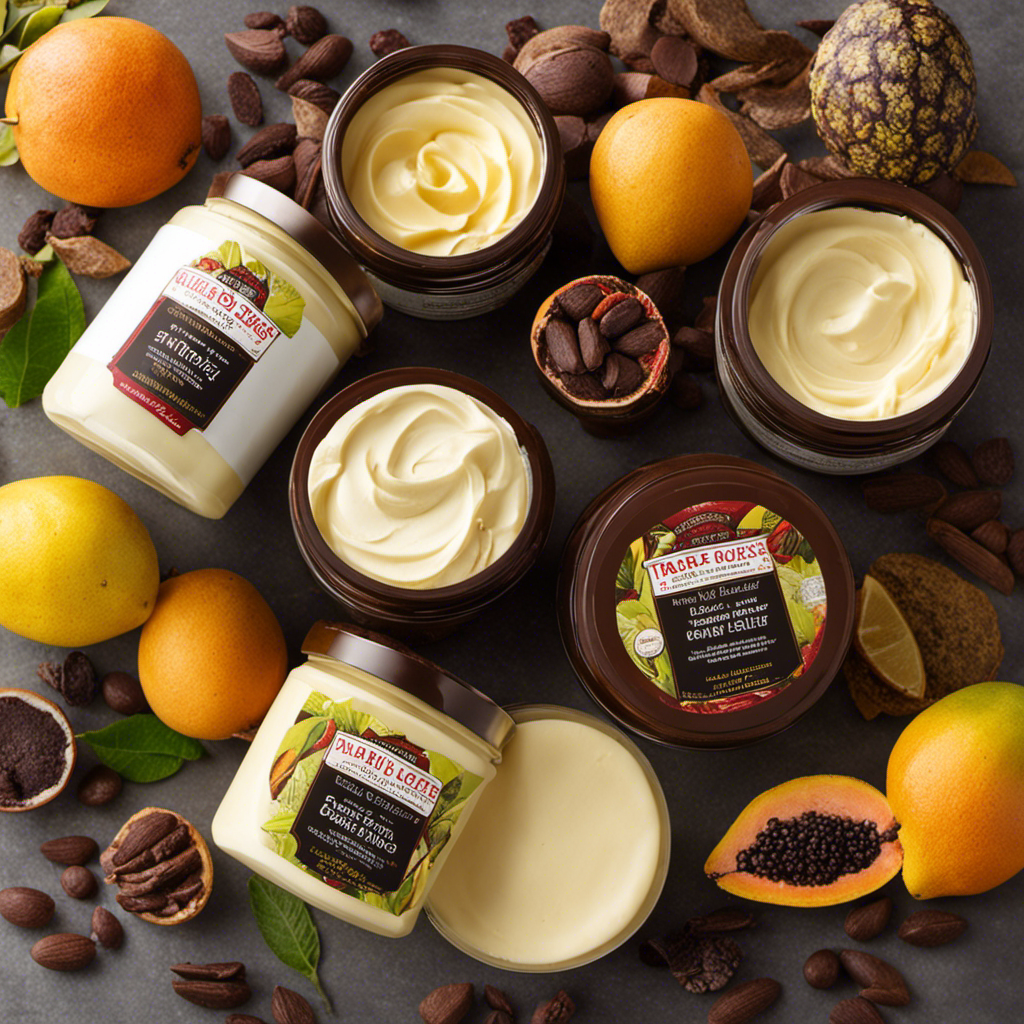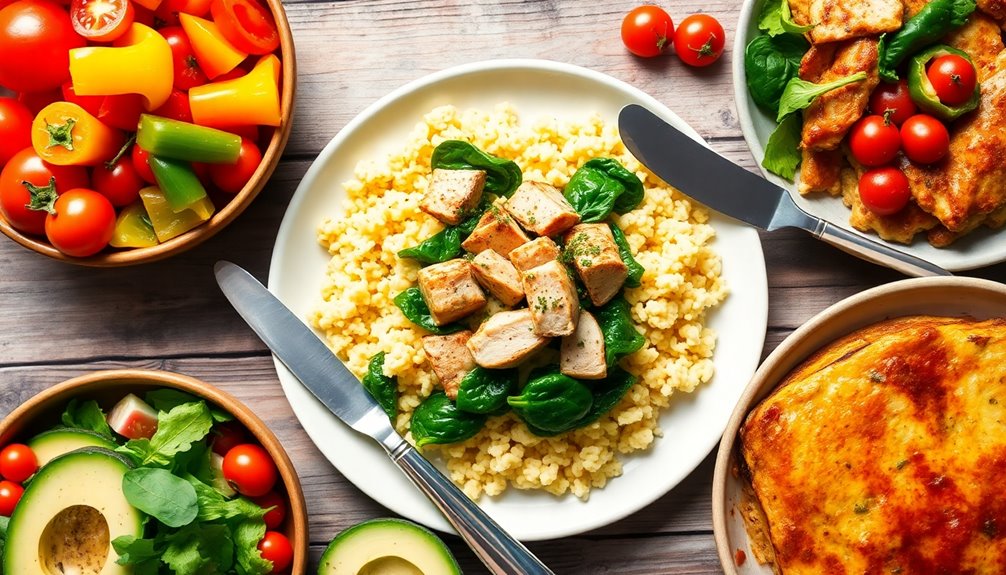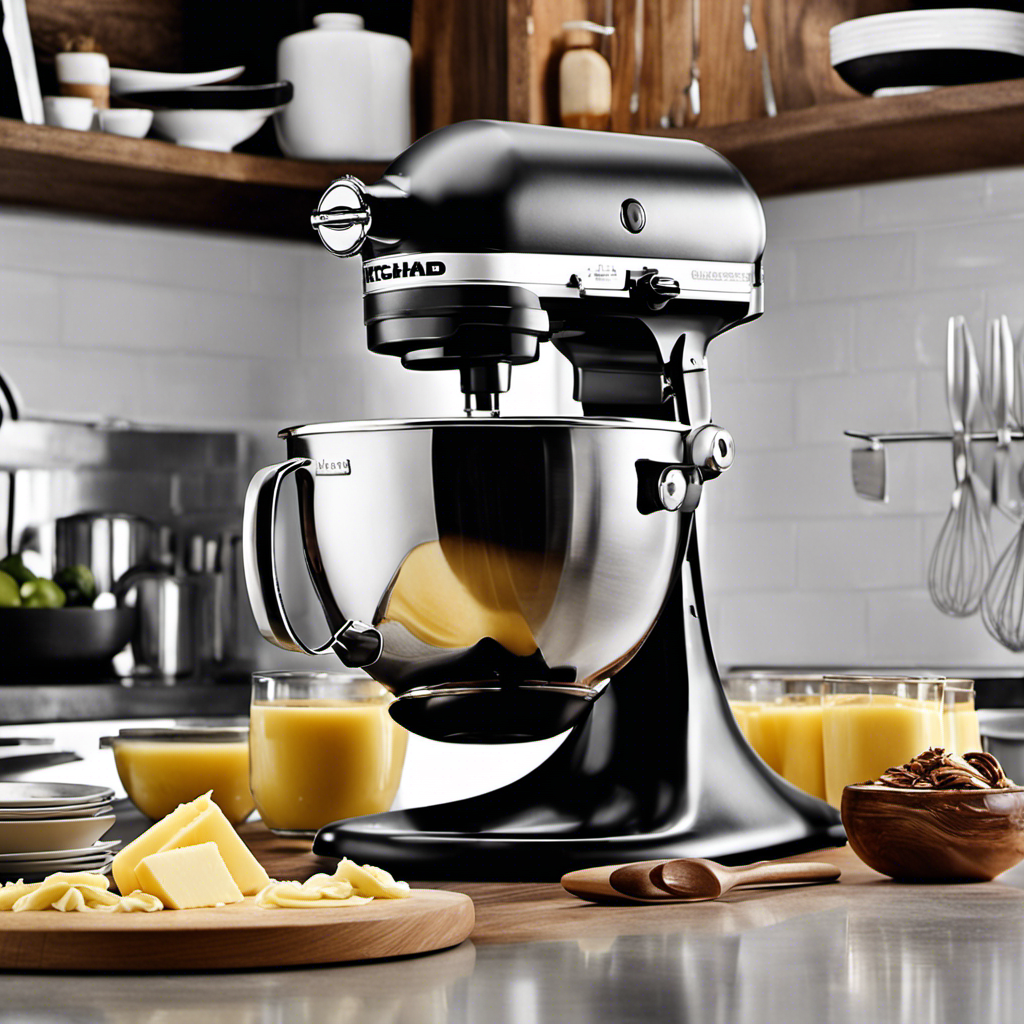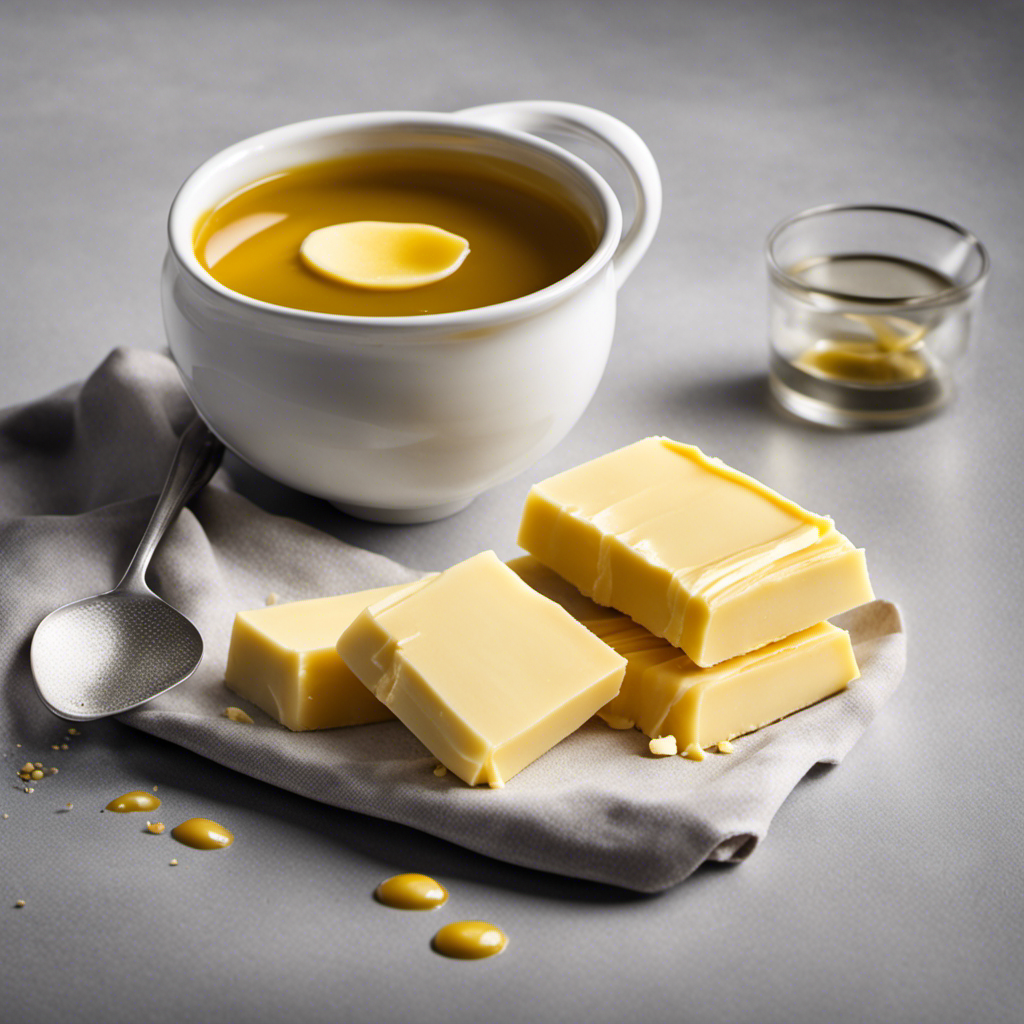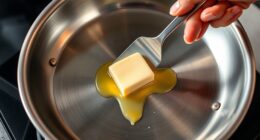I have to admit, creating icing without butter or cream cheese may appear difficult, but believe me, it can be done! Check out this article for alternative ingredients and recipes that will help you make delicious icing in no time.
Whether you’re looking for a vegan option, dairy-free alternatives, or nut-based variations, we’ve got you covered. We’ll even explore oil-based options that’ll have your taste buds dancing.
So let’s dive in and discover the wonderful world of butter and cream cheese-free icing!
Key Takeaways
- Non-dairy yogurt and avocado can be used as alternative ingredients for icing without butter or cream cheese.
- Vegan margarine or coconut oil can be substituted for butter in vegan icing recipes.
- Fruit purees and coconut milk can provide natural sweetness and creamy consistency in dairy-free icing options.
- Nut-based alternatives like almond or cashew butter, mashed bananas, or pureed berries can be used to create unique icing variations without butter or cream cheese.
Alternative Ingredients for Icing
You can use non-dairy yogurt or avocado as alternatives for butter or cream cheese in your icing.
When it comes to egg-based icing options, you can whip up a light and fluffy meringue icing. Simply beat egg whites with sugar until stiff peaks form, then spread it on your cake or cupcakes.
Another option is to make a fruit puree icing using fresh or frozen fruit. Blend the fruit until smooth, then mix it with powdered sugar until it reaches your desired consistency. This adds a burst of fruity flavor to your icing and is perfect for those seeking a healthier alternative.
Now, let’s move on to some delicious vegan icing recipes that are sure to satisfy any sweet tooth.
Vegan Icing Recipes
For a dairy-free option, try using vegan margarine or coconut oil in your vegan icing recipe.
Vegan icing can come in a variety of flavors to suit your taste preferences. Some popular vegan icing flavors include chocolate, vanilla, and lemon.
To sweeten your vegan icing, you can use natural sweeteners such as maple syrup, agave nectar, or coconut sugar. These options are not only vegan-friendly, but they also add a unique flavor profile to your icing.
Whether you’re making a vegan cake, cupcakes, or cookies, experimenting with different flavors and sweeteners can elevate your desserts to a whole new level.
Now, let’s explore some other dairy-free icing options that you can try.
Dairy-Free Icing Options
To create a dairy-free icing, try using vegan margarine or coconut oil as a substitute for butter. These alternatives provide a creamy texture and richness without the use of dairy products.
For those looking for fruit-infused options, fruit purees can be used to add natural sweetness and flavor to the icing. Some popular choices include strawberry puree, mango puree, and raspberry puree.
Another option is to use coconut milk as the base for the icing. Coconut milk adds a subtle tropical flavor and a creamy consistency. It pairs well with tropical fruits like pineapple or passion fruit.
Additionally, you can experiment with adding different extracts or spices to enhance the flavor of your dairy-free icing.
Nut-Based Icing Variations
By using almond or cashew butter as the main ingredient, nut-based icings can provide a rich and creamy alternative to traditional dairy-based options. These nut-based icings are not only delicious, but they also offer a variety of flavors and textures that can elevate any dessert.
For those with nut allergies or looking for nut-free icing options, fear not! There are fruit-based icing alternatives that are equally delightful. For example, mashed bananas can be mixed with a touch of powdered sugar and vanilla extract to create a smooth and sweet icing. Similarly, pureed berries or fruit preserves can be mixed with a bit of cornstarch to thicken and create a luscious fruit-based icing.
These alternatives offer a unique twist to traditional icing recipes and are sure to satisfy everyone’s taste buds.
Oil-Based Icing Alternatives
You can switch up your traditional icing recipe by using oil-based alternatives for a lighter and more flavorful option. Here are some ideas to get you started:
-
Using fruit puree as a base for oil-based icing:
-
Purees like strawberry, raspberry, or mango can add a burst of natural sweetness and flavor to your icing.
-
Simply blend the fruit of your choice until smooth, then mix it with a neutral oil like canola or grapeseed to create a creamy texture.
-
Adjust the sweetness by adding powdered sugar or a natural sweetener like honey or maple syrup.
-
Incorporating coconut milk into oil-based icing recipes:
-
Coconut milk adds a rich and tropical taste to your icing.
-
Mix coconut milk with a light oil, such as sunflower or avocado oil, to create a smooth and silky texture.
-
You can also add a touch of vanilla extract or coconut extract for an extra layer of flavor.
Frequently Asked Questions
Can I Use Almond Milk Instead of Regular Milk in the Dairy-Free Icing Options?
Yes, almond milk can be used instead of regular milk in dairy-free icing. The pros of using almond milk include a subtle nutty flavor, while the cons may include a thinner consistency.
What Are Some Alternatives to Powdered Sugar for the Vegan Icing Recipes?
There are several alternative sweeteners for vegan icing, without using powdered sugar. Some options include maple syrup, agave nectar, or coconut sugar. These can be used to make delicious and dairy-free icing recipes.
Are There Any Nut-Free Options for the Nut-Based Icing Variations?
Sure, there are nut-free alternatives available for icing that are allergy-friendly. It’s important to consider options like sunflower seed butter or soy-based cream cheese as substitutes for the nut-based icing variations.
Can I Use Coconut Oil Instead of Vegetable Oil in the Oil-Based Icing Alternatives?
Sure, coconut oil can be a great substitute for vegetable oil in oil-based icing. It adds a subtle tropical flavor and a smooth texture. Just be sure to melt it first for easy mixing.
Can I Use Soy Butter as a Substitute for Butter in the Alternative Ingredients for Icing Section?
Yes, soy butter can be used as a substitute for butter in icing. It provides a similar texture and flavor. Additionally, almond milk can be used as a dairy-free option to make the icing smooth and creamy.
Conclusion
In conclusion, making icing without butter or cream cheese is not only possible but also delicious. By exploring alternative ingredients such as coconut milk, vegan margarine, or nut-based variations, you can create a creamy and flavorful icing that will satisfy all taste buds.
Whether you are following a vegan or dairy-free diet or simply looking for a healthier option, these recipes offer a wide range of choices. So, next time you’re in need of icing, don’t limit yourself to traditional ingredients – get creative and try something new! You’ll be pleasantly surprised by the results.

